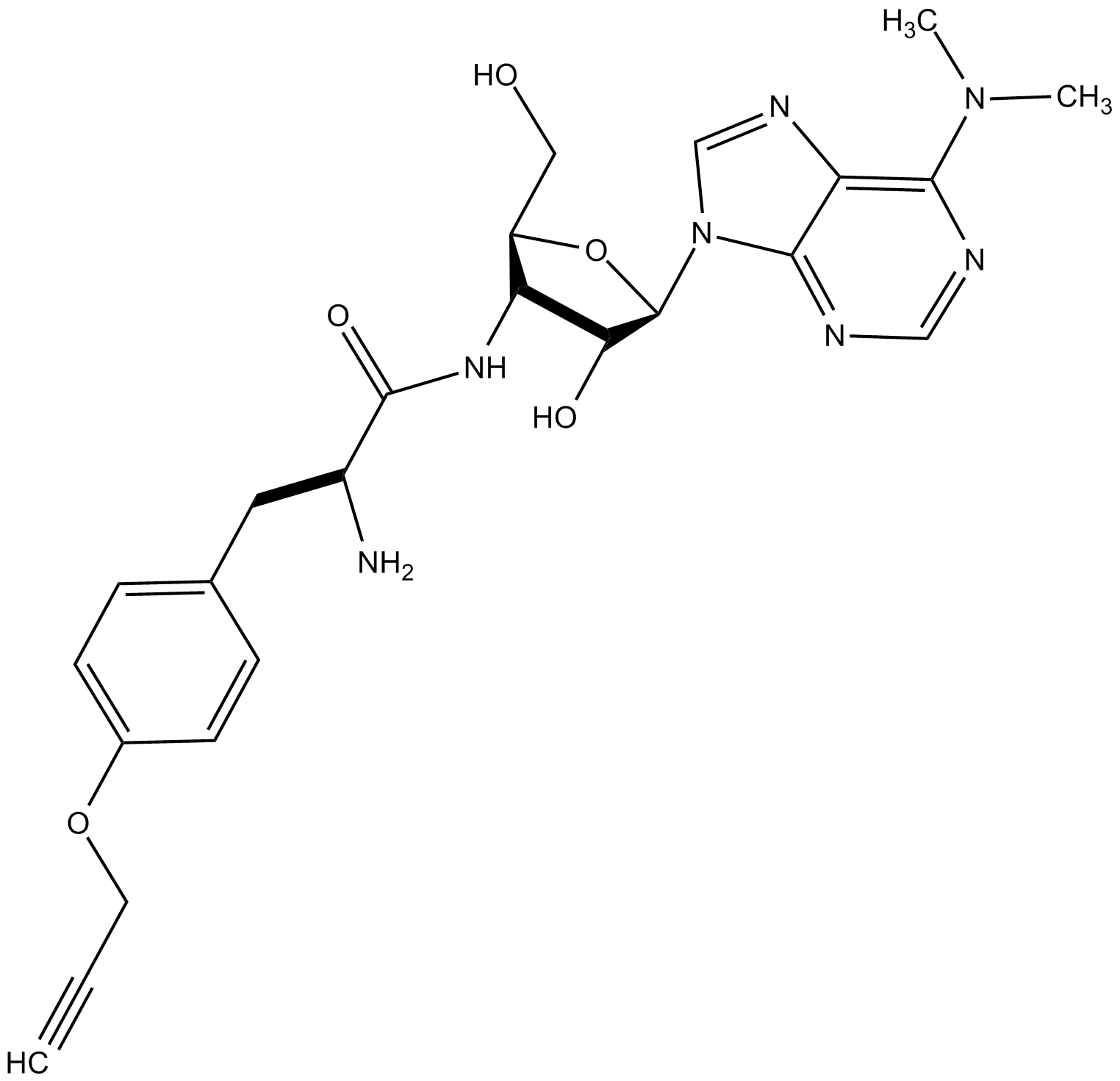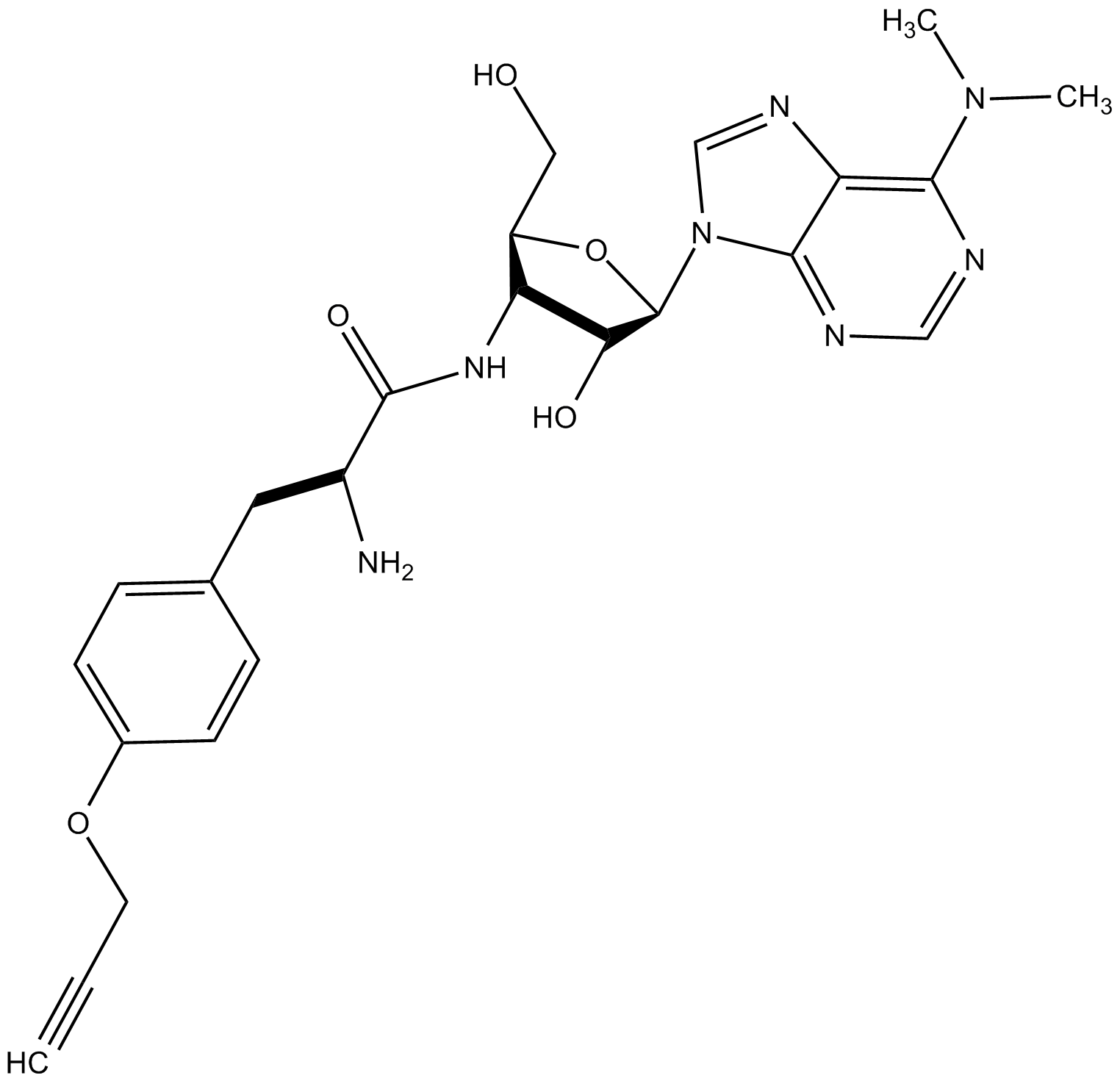O-propargyl-puromycin (OPP)
O-propargyl-puromycin (OPP; CAS: 1416561-90-4) is an alkyne-functionalized derivative of puromycin, commonly utilized to detect and quantify newly synthesized proteins. It incorporates into nascent polypeptides by acting as a translation terminator, covalently attaching to their C-terminal ends. Subsequent detection occurs through azide-alkyne cycloaddition under copper(I) catalysis, facilitating visualization or isolation of actively produced proteins. In cellular and animal models, OPP labeling enables measurement of global protein synthesis rates and assessment of responses to various stimuli or stress conditions, contributing significantly to proteomics and cell biology research.
| Storage | Store at -20°C |
| M.Wt | 495.53 |
| Cas No. | 1416561-90-4 |
| Formula | C24H29N7O5 |
| Solubility | Soluble in DMSO |
| Chemical Name | (2S)-2-amino-N-((2S,5R)-5-(6-(dimethylamino)-9H-purin-9-yl)-4-hydroxy-2-(hydroxymethyl)tetrahydrofuran-3-yl)-3-(4-(prop-2-yn-1-yloxy)phenyl)propanamide |
| SDF | Download SDF |
| Canonical SMILES | OC[C@H]1O[C@@H](N2C3=NC=NC(N(C)C)=C3N=C2)C(O)C1NC([C@H](CC4=CC=C(OCC#C)C=C4)N)=O |
| Shipping Condition | Small Molecules with Blue Ice, Modified Nucleotides with Dry Ice. |
| General tips | We do not recommend long-term storage for the solution, please use it up soon. |
Quality Control & MSDS
- View current batch:
-
Purity = 98.00%
- COA (Certificate Of Analysis)
- MSDS (Material Safety Data Sheet)
Chemical structure









